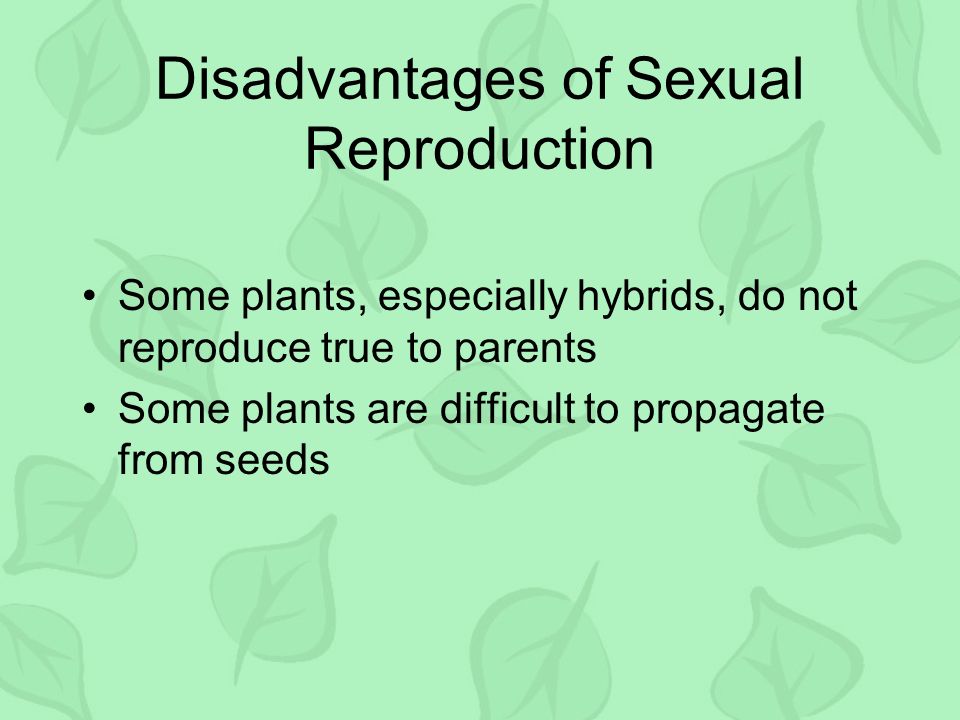Sexual reproduction in plants is when the male and the female gametes fused to produce a new plant.
There are advantages and disadvantages of both sexual and asexual reproduction in plants.
As we’ve discussed the advantages of sexual reproduction in our last edition, let’s highlight some of the disadvantages of sexual reproduction.
Disadvantages of Sexual Reproduction in Plants
Some of the reasons asexual reproduction in plants is better than sexual reproduction are the following.

It requires two partners
Since sexual reproduction involves the union of two different gametes from two separate plants, it becomes necessary for the two gametes to be brought together before fertilization can occur.
This becomes difficult in cases where certain plants are isolated from one another.
Although there are thousands of plants that bear both the male and the female reproductive parts, thus produce both the male and the female organs and can self-pollinate and self-fertilize to produce new plants.
It requires agents before fertilization can take place
Pollination is a process that can be likened to sexual intercourse in humans.
For pollination to take place, there are agents such as wind, animals, insects, water that are needed, and
pollination will not occur if these agents are not available.
In the worst case, some plants are pollinated through a particular insect, making pollination difficult if such insects are not readily available.
Healthy plants can produce poor plants
in Sexual reproduction in plants, healthy plants may produce individual plants exhibiting undesired qualities.
This is because there are external influences on the production of new plants, and quality can not be controlled.
These poor plants may sooner or later become eliminated.
Diseases are easy to spread in sexual reproduction
Since two gametes from different plants fuse, diseases from a plant can be transferred to another plant or inherited by a new plant.
Not only a disease but other poor traits can also be transferred.
Plants don’t mature fast
Unlike asexually produced plants, plants don’t mature faster in sexual reproduction because some different processes and stages are involved.
Agents of pollination are required, pollination, fertilization, the formation of seeds, seed-producing seedlings, and seedlings growing into adult plants.
There are both natural factors and other influences that may also retard the growth of the plant.
It requires more time and energy
Sexual reproduction in plants requires more time for new plants to be produced compared to asexual production.
Also, nutrients and energy are needed to produce both the male and female gametes for sexual reproduction to take place.
A plant that’s deficient in quality nutrients for growth may not develop healthy reproductive parts, and not produce healthy gametes and produce it at the expected period.
Sexual reproduction is wasteful
Many pollen grains are produced but most of them will be wasted by the pollination agents.
Pollens can be transferred to different places where they are not needed.
The indiscriminate and widespread spread of new plants also occurs in sexual reproduction.
For example, pollens from plants on your farm can be transferred to fertilize plants in the neighboring farms, and new plants will grow on farms different from yours.
Conclusion
Sexual reproduction is a natural means of reproduction in plants but yields can not be well controlled.
As commercial farming is getting popular and food security is now more important, sexual reproduction in plants is now discouraged, and asexually produced plants are better, safer, and high quality can be easily achieved.







